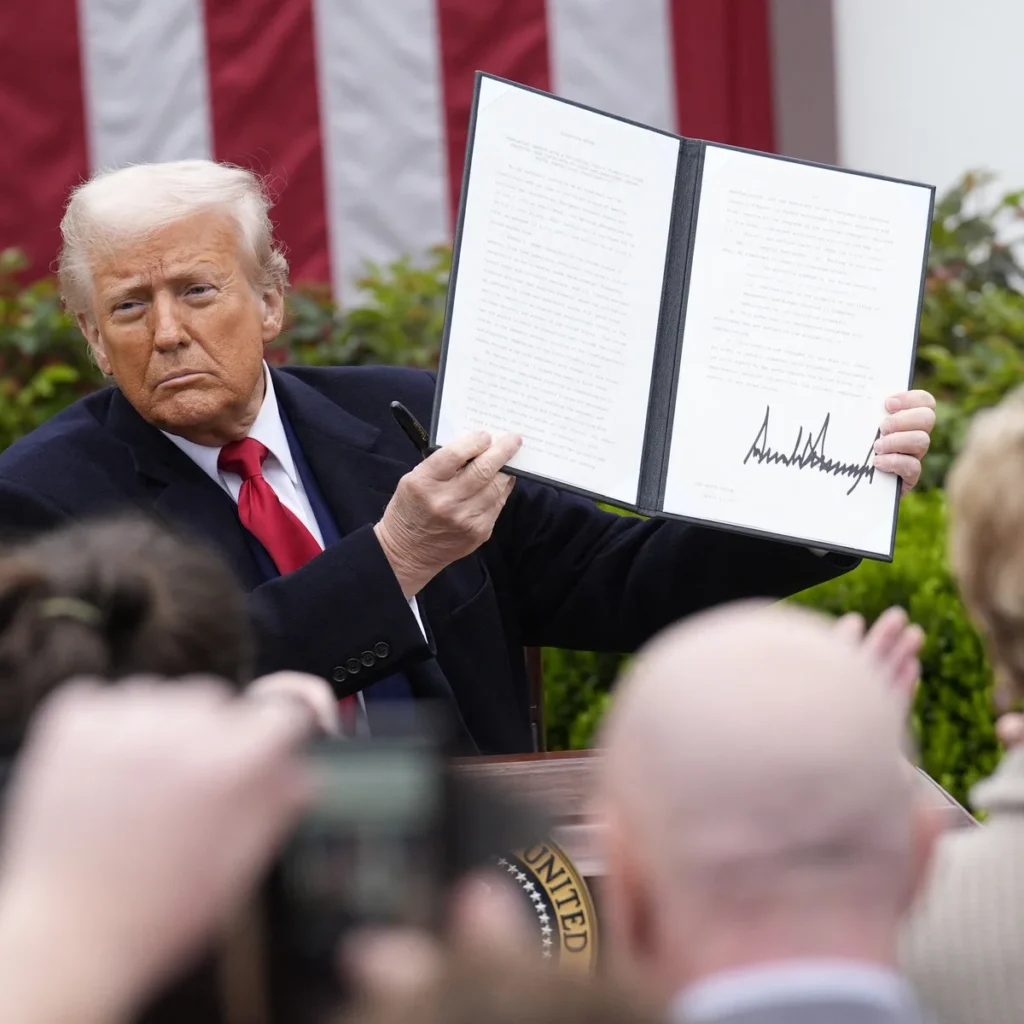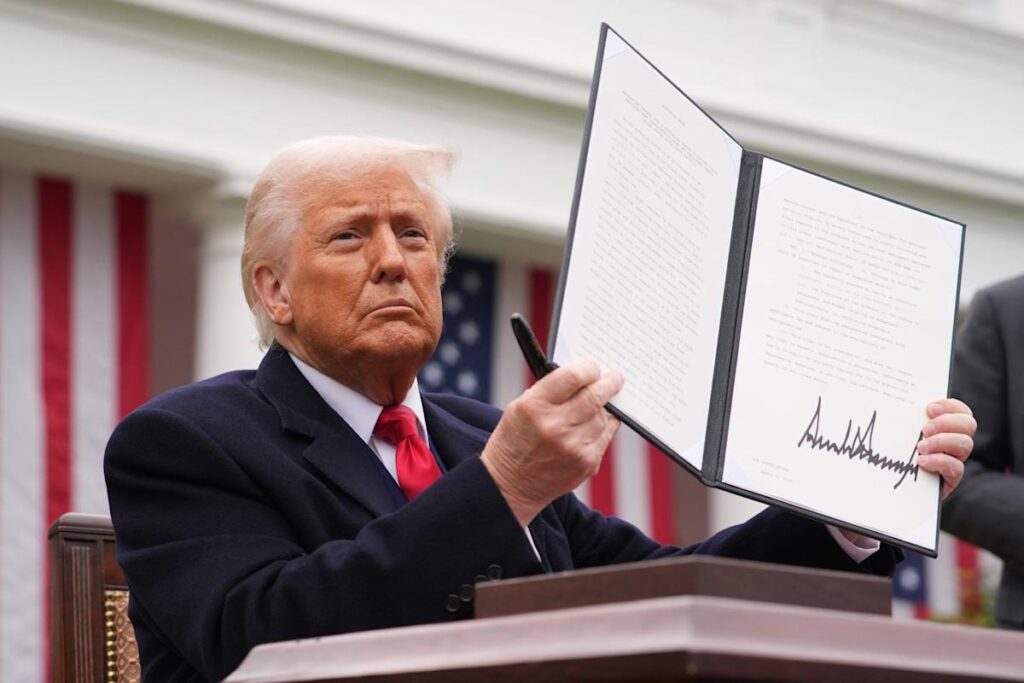Former President Donald Trump recently made headlines by claiming that U.S. tariffs are bringing in “$2 billion a day.” The statement, made during a campaign rally and repeated in social media posts, aimed to underscore his administration’s tough stance on trade, particularly against China.
But how accurate is this bold assertion? An in-depth look at government data, independent economic analyses, and trade expert commentary shows that the $2 billion per day claim is greatly exaggerated.
What Did Trump Say?
On April 8, 2025, Trump stated that the United States is collecting “$2 billion a day” in tariff revenue, primarily due to his administration’s escalated trade measures.

His remarks come in the wake of his latest policy announcements, including imposing a 145% tariff on Chinese imports, a move aimed at addressing what he describes as unfair trade practices and intellectual property theft.
However, while tariffs have indeed added billions to the U.S. Treasury over time, Trump’s claim doesn’t hold up under scrutiny.
What the Data Actually Shows
According to FactCheck.org, the current revenue from tariffs doesn’t match Trump’s stated figure. Independent projections suggest that the proposed tariff structure, if fully enacted, could generate between $2 trillion and $4 trillion over the next decade. This averages out to $550 million to $1.1 billion per day, significantly lower than the $2 billion figure Trump cited.
The U.S. Customs and Border Protection (CBP) and Department of the Treasury provide monthly tariff revenue figures. For instance, in 2024, average monthly tariff collections hovered around $8–$10 billion, equating to approximately $266–$333 million per day. Even during the height of the trade war with China, tariff income never reached the scale Trump currently claims.
Reaction from Economists and Trade Experts
Many experts have challenged the math behind Trump’s claims. PolitiFact, an independent fact-checking outlet, noted that no reputable analysis supports the $2 billion-a-day figure. Trade policy experts also point out that much of the cost of tariffs is passed on to U.S. businesses and consumers in the form of higher prices, rather than being a financial windfall for the federal government.
Source: PolitiFact Analysis
Chad Bown, a senior fellow at the Peterson Institute for International Economics, explained that tariffs are “a tax on imports,” meaning American companies pay these duties upfront and often pass the cost onto consumers. He adds, “If Americans are paying more, that’s not necessarily a win.”
Misunderstanding Tariff Mechanics
Tariff revenue is not a direct payment from foreign governments or exporters. Instead, it’s a tax levied on goods as they enter the U.S., collected by U.S. importers. This fundamental point is often overlooked in public discourse. While it’s true that the U.S. government collects this money, the economic burden is primarily borne by American firms and consumers.
Implications of Tariff Policy

While tariffs can be a powerful tool to address unfair trade practices, experts warn that relying too heavily on them can backfire.
A 2023 Congressional Budget Office (CBO) report found that tariffs imposed during the Trump administration cost U.S. consumers and businesses an estimated $80 billion in increased costs between 2018 and 2021, while only bringing in about $75 billion in revenue.
Additionally, some economists warn that trade tensions with major economies like China could hurt U.S. exports, disrupt supply chains, and lead to retaliatory measures, which ultimately negate the revenue benefit.
Government analysis: Congressional Budget Office
Conclusion
Trump’s claim that tariffs are bringing in $2 billion a day doesn’t reflect the available data or economic consensus.
While tariff revenue has increased in recent years, credible estimates place daily revenue at half—or even less—than the stated amount. Furthermore, the burden of tariffs largely falls on U.S. companies and consumers, making it a controversial and costly economic strategy.
For a policy that deeply impacts everyday Americans and the global economy, it’s critical that public claims are aligned with transparent data and sound economic reasoning.
This article has been carefully fact-checked by our editorial team to ensure accuracy and eliminate any misleading information. We are committed to maintaining the highest standards of integrity in our content.

Filza specializes in simplifying financial topics for everyday readers. Whether breaking down Canada’s tax guides or U.S. benefits like SNAP and VA Disability, Filza’s relatable writing style ensures readers feel confident and informed. Follow her insights on LinkedIn or reach out via email at [email protected].




